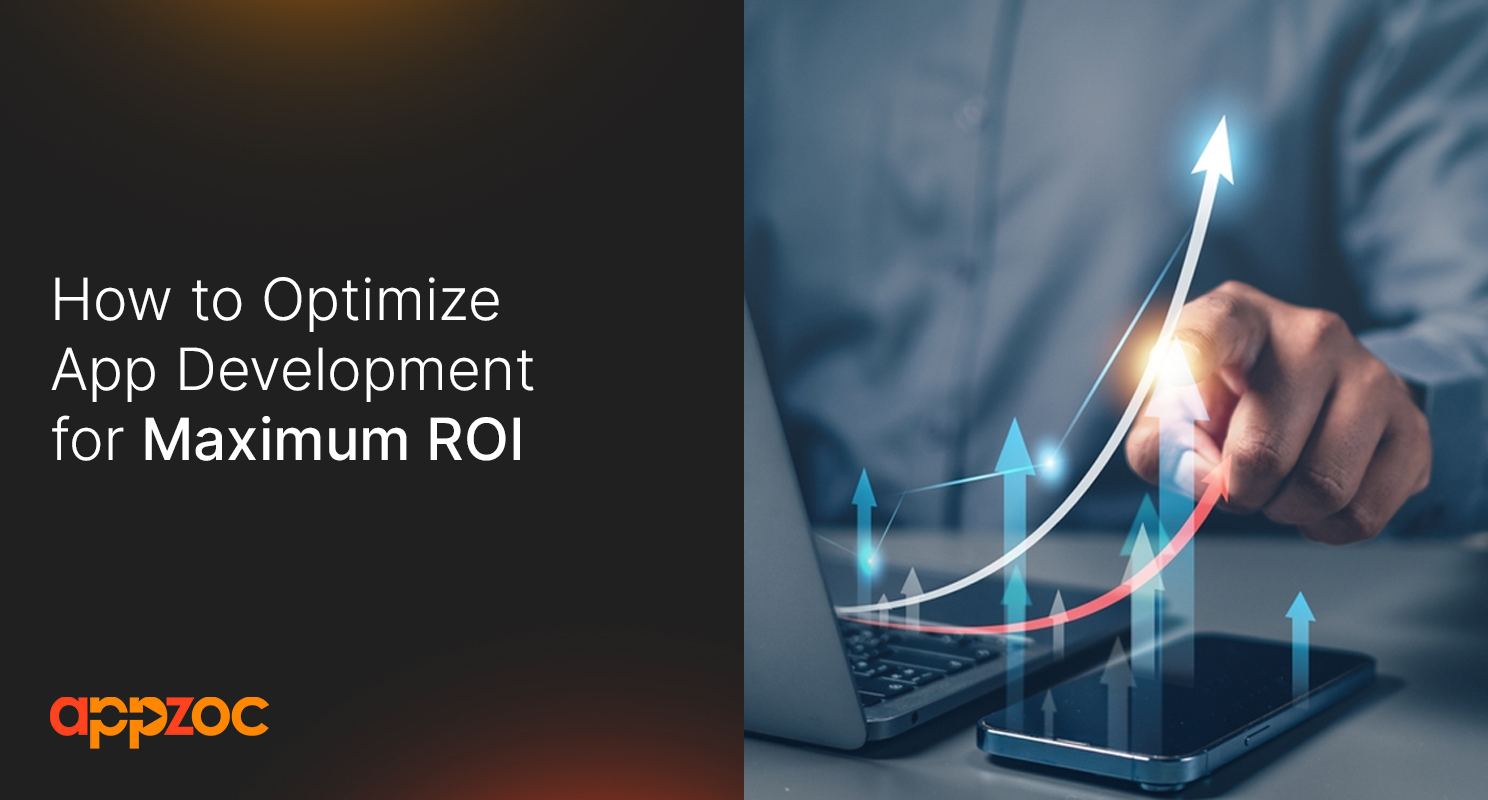
Flutter
Make the most of this cutting-edge technology by developing apps quickly! Our Flutter solutions have amazing features that can be used to create sleek, high-performance apps that can scale seamlessly across platforms.

Crafting a successful mobile app that drives meaningful business results involves far more than just coding capabilities. Developers must adopt an optimization mindset across the entire build-measure-learn lifecycle to maximize potential ROI.
By continually testing assumptions, monitoring data insights, and doubling down on what best resonates with users – iteration by iteration apps become more ingrained in customer lives. This compounds over time increasing the likelihood of winning outcomes.
In this post, we’ll cover key ways to optimize the development process itself for superior ROI. Follow these methods to build higher quality apps positioned for sustainable traction and retention at scale.
A shocking number of apps launch lacking clearly defined business goals or success metrics beyond vague awareness or engagement. Concretely determine upfront what outcomes if achieved would classify the app as a win
Is the goal simply more mobile traffic or newsletter subscriptions? Are you driving ecommerce sales or affiliate revenue through incentivised actions? Set tangible monetizable targets and optimize deliberately towards those points of value. Align utility and experience to convert users into desired outcomes.This sharpens decision making ongoing to filter out features that don’t directly ladder up.
Similarly, too few apps design experiences tailored to actual target user needs and behaviors. Base functionality and content decisions on extensively researched buyer and user personas versus assumptions or generic use cases.
Construct representative composites outlining precise demographic info, psychographics, goals sought, pain points and technical capabilities for each distinct audience group. Then meticulously design the optimal flows solving their priorities and addressing objections head on. When personas closely mirror reality, apps resonate immediately by feeling purpose built for customers.
In chasing extensive feature wishlists, many apps bloat into complex barely usable messes trying to be all things to all users. Combat this by embracing a minimum viable product (MVP) approach focused on an intentionally narrow but high value set of capabilities.
Resist packing every bell and whistle imagined into initial releases. Instead go lean with just those few functionalities proven to drive your defined success metrics. Release fast to start capturing real user data, cementing product-market fit around those core jobs-to-be-done. Supplementary capabilities come later once validation exists. Staying lean makes slipping in frequent experiment iterations easier.
Speaking of data, comprehensively instrument apps with event and behavioral tracking to unlock granular visibility into usage and engagement trends. When analytics integrate deeply, you detect exactly how people interact within apps, where they churn and what resonates most.
No guesswork exists around optimal user flows or prioritizing refinement areas. Hard metrics reveal truths on what drives outcomes. Apply learnings to tailor and enhance apps for stickiness. Sophisticated analytics foundations pay dividends enabling data-backed decisions and continual optimization.
Poor app performance remains a huge friction point for conversions, retention and ratings. Clunky interfaces deliver painfully sluggish experiences riddled with janky scrolling, glacial loads and stuttery transitions. Yet many developers neglect optimizing architecture and assets for buttery 60fps animation.
By designing apps intentionally for speed, they feel innately higher quality and more responsive. Users enjoy smoother flows while having greater bandwidth left interacting with actual content vs waiting on progress indicators. Faster experiences feel inherently more capable. Follow platform-specific performance checklists to eliminate resource bottlenecks, keeping user attention focused.
Also Read:Best Practices for Developing Secure Mobile Apps
Strategically designed continuous delivery (CD) pipelines enable pushing new app versions often without disruption. Rather than sporadic quarterly updates, seamless CD systems allow slipping in experiment code or urgent fixes weekly or even daily.
This means baking learnings faster based on latest user data to enhance retention and satisfaction sooner. Frequent incremental changes also reduces risk over bulky infrequent code dumps while allowing more flexibility reacting to market shifts. Prioritize architecting smooth automated release processes suited for rapid iteration ongoing.
Approaching mobile app development intentionally through defined objectives, representative models, essentialist scope and rigorous instrumentation establishes solid foundations for optimization and ultimate business success. Of course striking the right product-market fit remains challenging. But staying nimble via continuous delivery provides the means to double down on what best delivers ROI as real data reveals over time.
As you plan upcoming app projects or enhancements, consider how the above tips might guide efforts to maximise value. Is additional assistance required executing on data-driven development with proactive performance monitoring and smooth releases? Reach out to our top app design squad mobile development company bangalore and mobile app development company Kochi for a free consultation on optimizing any mobile initiative for business outcomes. Let’s chat!